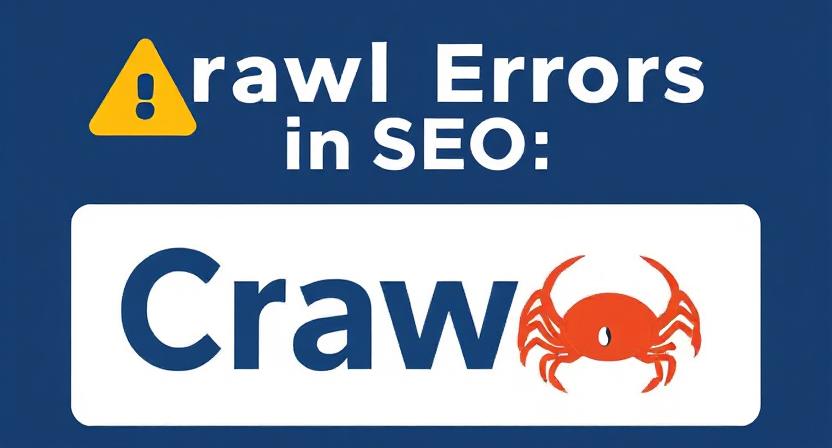Understanding why pages not showing up in Google is a common concern for website owners. This guide dives deep into the most common indexing issues, how to diagnose them, and step-by-step solutions to ensure your content gets discovered and ranked.
Introduction: The Frustration of Missing Pages
You’ve created high-quality content or updated critical landing pages. You’ve optimized it with relevant keywords, internal links, and even shared it across social media.
Yet, weeks go by — and those pages still don’t show up in Google.
This issue is more common than you might think. In many cases, it’s not about poor SEO or low-quality content. Rather, it’s an indexing problem: Google hasn’t added the page to its database, so it doesn’t appear in search results at all.
In this comprehensive guide, we’ll explore:
- What indexing means and why it matters
- Common technical and structural reasons behind missing pages
- How to check if your pages are indexed
- Step-by-step fixes for each type of indexing issue
- Best practices to prevent future indexing problems
Let’s dive in.
What Does It Mean for a Page to Be Indexed?

To understand why some pages don’t appear in Google, it’s important to understand what indexing is and how it fits into the larger picture of how Google works.
The Three Stages of Google’s Search Process:
- Crawling:
Google uses bots (like Googlebot) to visit and read web pages. These bots follow links from one page to another, collecting data as they go. - Indexing:
After crawling, Google analyzes the content of each page and stores it in its massive database — the Google Index . This process involves understanding what the page is about, who it’s intended for, and whether it offers value. - Ranking:
When a user performs a search, Google retrieves relevant pages from the index and ranks them based on over 200 known ranking factors.
If indexing fails , the page will never reach the ranking stage — meaning it won’t appear in search results at all.
Common Reasons Why Pages Don’t Appear in Google
There are numerous potential causes for indexing issues. Here’s a breakdown of the most frequent ones, along with technical details and actionable fixes.
1. Noindex Meta Tag Is Set
A noindex meta tag tells Google explicitly not to include a page in its index.
Example:
How It Happens:
- Manually added via CMS settings
- Automatically generated by plugins (e.g., WordPress SEO tools)
- Used to hide staging, duplicate, or low-value pages
How to Diagnose:
- View the page source code (right-click > View Page Source)
- Look for the
noindexdirective - Use Google Search Console > URL Inspection Tool to see indexing status
Solution:
Remove the noindex directive from the page header or CMS settings. If the page is intentionally hidden, leave the tag in place.
2. Blocked by robots.txt
The robots.txt file acts as a set of instructions for crawlers like Googlebot. It tells them which parts of your site should or shouldn’t be crawled.
Problem:
Sometimes, well-meaning developers accidentally block directories that contain important content.
Example:
How to Diagnose:
- Go to Google Search Console > Settings > Robots.txt Tester
- Enter the path you suspect is blocked
- Review current rules
Solution:
Update the robots.txt file to allow access to key areas of your site. Avoid overly broad disallow directives unless necessary.
3. Thin or Low-Quality Content
Google prioritizes content that provides value to users. If a page has minimal text, lacks depth, or appears auto-generated, Google may choose not to index it.
How to Diagnose:
- Use the
site:search operator (site:yourdomain.com) to see if the page appears - Compare your content against top-ranking competitors
- Check for signs of duplicate or copied content
Solution:
Expand the content, add unique insights, and ensure it fully answers user intent. Consider merging thin pages with similar topics.
4. Crawl Errors (e.g., 404, Server Errors)

If Google tries to crawl a page and encounters an error, it may skip indexing it entirely.
Common Issues:
- 404 Not Found: The page no longer exists.
- 5xx Server Errors: Temporary server issues preventing access.
- Redirect Chains: Too many redirects can confuse crawlers.
How to Diagnose:
- In Google Search Console , go to the Coverage Report
- Filter by “Excluded” or “Error” status
- Use Screaming Frog SEO Spider for large-scale audits
Solution:
Fix broken links, resolve server errors, and simplify redirect chains. Monitor uptime regularly using tools like UptimeRobot or Pingdom.
5. Canonical Tags Pointing Elsewhere
Canonical tags help avoid duplication by telling Google which version of a page is preferred.
Issue:
If a canonical tag points to a different URL, Google may index only that version — leaving your current page out.
Example:
- View page source or use GSC URL Inspection Tool
- Ensure the canonical URL matches the current page unless intentional
Solution:
Update the canonical URL to point to itself unless consolidation is desired. Use 301 redirects where appropriate.
6. Newly Published Content Not Yet Crawled

Newly published pages take time to be discovered and indexed.
Typical Timeline:
- Small sites: 4–7 days
- Large sites: several weeks
How to Speed It Up:
Use the URL Inspection Tool in Google Search Console to request indexing manually.
Also, ensure the page is internally linked from already-indexed pages to help Google discover it faster.
7. Poor Internal Linking Structure
Google follows internal links to discover new content. If a page isn’t linked to from anywhere else on your site, it may never be found.
How to Improve:
- Add internal links from popular or frequently crawled pages
- Include the page in navigation menus or related content sections
- Use breadcrumbs and contextual linking to improve discoverability
8. Duplicate Content Across Multiple URLs
Having the same content accessible through multiple URLs (e.g., www vs non-www, HTTP vs HTTPS) leads to indexation conflicts .
How to Fix:
- Implement 301 redirects for duplicate versions
- Use canonical tags to indicate the primary version
- Ensure consistent internal linking
9. Slow Load Times or Server Issues
Google may delay or skip indexing a page if it loads slowly or returns timeout errors.
Tools to Test:
- PageSpeed Insights
- Lighthouse
- GTmetrix
Solution:
Optimize images, leverage browser caching, minimize CSS/JS files, and consider upgrading hosting plans for better performance.
10. Incorrect Use of Meta Robots or HTTP Headers
Advanced settings like X-Robots-Tag headers or custom meta directives can unintentionally block indexing.
Example:
Use developer tools or plugins to inspect HTTP response headers.
Solution:
Ensure no noindex directives are set unless intentional.
How to Check if Your Pages Are Indexed
Here’s how you can verify whether your pages are indexed:
1. Use the site: Search Operator
Type site:yourdomain.com into Google Search to see indexed pages from your domain.
Note: This method isn’t always accurate but gives a general idea.
2. Google Search Console – URL Inspection Tool
Enter a specific URL into the tool to see:
- Whether it’s indexed
- If there are indexing issues
- When it was last crawled
3. Coverage Report in GSC
Check the Coverage report under Index in Google Search Console to identify excluded or errored pages.
4. Third-Party Tools
Tools like Screaming Frog , Ahrefs , or SEMrush can audit large numbers of URLs and flag indexing issues at scale.
Step-by-Step Guide to Get Pages Indexed
Follow this process to resolve indexing issues and improve visibility:
Step 1: Fix Technical Issues
- Remove
noindextags - Unblock pages in
robots.txt - Fix crawl errors (404s, server errors)
- Resolve redirect chains
Step 2: Improve Content Quality
- Expand thin content
- Ensure the page offers real value
- Make sure it aligns with user intent
Step 3: Add Internal Links
- Link the page from other indexed pages
- Include it in navigation menus or related content sections
Step 4: Submit the URL Manually
- Use Google Search Console > URL Inspection Tool > Request Indexing
Step 5: Ensure Sitemap Inclusion
- Confirm the page is included in your XML sitemap
- Resubmit the sitemap in Google Search Console if needed
Step 6: Monitor Progress
- Use GSC or third-party tools to track indexing status over time
- Re-audit periodically to catch recurring issues
Best Practices to Prevent Future Indexing Problems
To avoid future indexing issues, follow these proactive strategies:
- Regularly Audit Your Site
Use tools like Screaming Frog or Ahrefs to check for crawl and index issues. - Maintain a Consistent Publishing Strategy
New content should be internally linked and submitted for indexing. - Monitor Server Health
Downtime or slow performance can impact crawling and indexing. - Educate Team Members
Ensure editors and developers understand the impact ofnoindex, canonical tags, and robots.txt. - Use Structured Data
Helps Google better understand your content and improves indexing chances.
Tools That Help With Indexing and Sitemap Management
Here are some essential tools to help manage and monitor indexing:
Conclusion: Getting Noticed by Google Starts With Understanding the Basics
Not all pages get indexed automatically — and that’s okay. But if you’re publishing valuable content and it’s not being found, it’s time to investigate.
By identifying and resolving indexing issues, you can dramatically improve your website’s visibility in Google.
From removing noindex tags to improving crawlability and submitting URLs manually, the solutions outlined in this guide give you actionable steps to ensure your content gets the attention it deserves.
Now that you know why some pages aren’t showing up in Google, you’re ready to fix them and start getting noticed.


